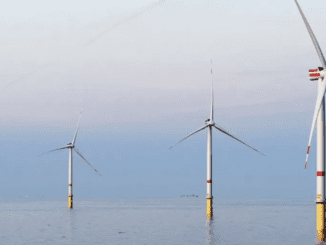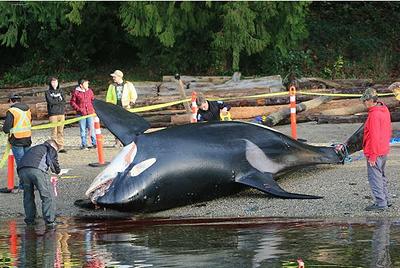
WASHINGTON, DC, September 29, 2021 (ENS) – Endangered Species Act protections came too late for 23 species that will be removed from the Endangered Species List because they are already beyond recovery, under a new U.S. Fish & Wildlife Service proposal. Most were either extinct, functionally extinct, or in steep decline when listed.
Species being proposed for delisting include the ivory-billed woodpecker, Bachman’s warbler, two species of freshwater fishes, eight species of Southeastern freshwater mussels and 11 bird and plant species from Hawaii and the Pacific Islands.
The purpose of the Endangered Species Act, ESA, is to protect and recover imperiled species and the ecosystems upon which they depend. But almost three billion birds have been lost in North America since 1970, and the extinctions proposed today highlight the need to take action to prevent further losses.
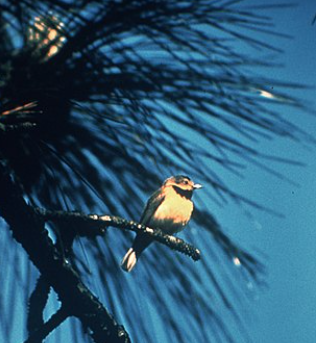
“With climate change and natural area loss pushing more and more species to the brink, now is the time to lift up proactive, collaborative, and innovative efforts to save America’s wildlife. The Endangered Species Act has been incredibly effective at preventing species from going extinct and has also inspired action to conserve at-risk species and their habitat before they need to be listed as endangered or threatened,” said Interior Secretary Deb Haaland.
“We will continue to ensure that states, tribes, private landowners, and federal agencies have the tools they need to conserve America’s biodiversity and natural heritage,” Haaland said.
These species extinctions highlight the importance of the ESA and efforts to conserve species before declines become irreversible. The circumstances of each also underscore how human activity can drive species decline and extinction, by contributing to habitat loss, overuse and the introduction of invasive species and disease.
The growing impacts of climate change are expected to worsen these threats and their interactions. They also underscore the ongoing conservation challenges of the Service.
Stemming this extinction crisis is a central component of the Biden-Harris administration’s America the Beautiful initiative, a locally led and voluntary, nationwide effort to conserve, connect, and restore 30 percent of lands and waters by 2030.
One of the initiative’s goals is to enhance wildlife habitat and improve biodiversity – to keep species from reaching the point where they are in danger of extinction or are too far gone to save.
“The Service is actively engaged with diverse partners across the country to prevent further extinctions, recover listed species and prevent the need for federal protections in the first place,” said Martha Williams, principal deputy director of the Fish & Wildlife Service.
“The Endangered Species Act has been incredibly successful at both preventing extinctions and at inspiring the diverse partnerships needed to meet our growing 21st century conservation challenges,” Williams said.
While protections were provided too late for these 23 species, the ESA has been successful at preventing the extinction of more than 99 percent of species listed.
In total, 54 species have been delisted from the Endangered Species Act due to recovery, and another 56 species have been downlisted from endangered to threatened.
The Service’s current workplan includes actions that encompass 60 species for potential downlisting or delisting due to successful recovery efforts.
Additionally, numerous species have avoided ESA listing thanks to the collaborative efforts of federal agencies, states, tribes and private landowners, with the ESA serving as a catalyst for conservation efforts that help protect imperiled species and their habitat.
Hawaii and the Pacific Islands Hit Hardest By Extinctions
Eleven species from Hawaii and Guam are being proposed for delisting due to extinction, many of which had striking characteristics, such as the long curved beak of the Kauai akialoa, a small Hawaiian honeycreeper that became extinct in the 20th century due to introduced avian disease and habitat loss of their high mountain wet forests.
The Maui akepa, with its brilliant colors, has gone extinct due to habitat loss, conflict and competition with invasive species, and mortality due to invasive diseases spread by mosquitoes such as avian malaria and fowlpox.
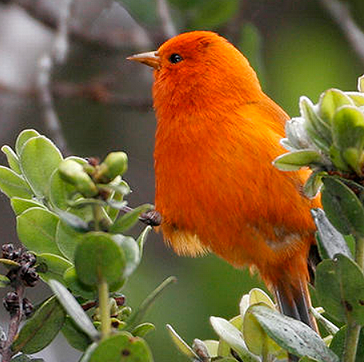
Surveys in the 1990s failed to find definitive evidence for the presence of the Maui akepa, but there was some possible audio evidence of this species found in 2010, therefore, the species may potentially persist, according to BirdLife International. Other akepas are still found on Kauai and the Big Island of Hawaii.
Proposed for delisting, the Kauai nukupuu is one of a group of critically endangered species of Hawaiian honeycreepers. There are no recent confirmed records for any of the species and they may be extinct or functionally extinct. The last sightings, both on Kauai and Maui, were in 1998.
As with other Hawaiian honeycreepers, the decline of the nukupuʻu group is connected to habitat loss due to both humans and hurricanes, introduced predators and disease-carrying mosquitoes.
The tiny Molokai creeper, bright red or bright orange with dark wings and tail feathers, was hunted for its feathers which were used to decorate ceremonial capes and headpieces. There is a possibility that this species holds on in remote, inaccessible regions of the Olokui plateau, a mountainous region on the island of Molokai where another possibly extinct bird, the Olomaʻo is protected.
Endemic to the island of Kauai, the haunting call of the Kauai oo will never be heard again. The Kauaʻi ʻōʻō was a member of the extinct genus of the ʻōʻōs within the extinct family Mohoidae from the islands of Hawaii. It was previously regarded as member of the Australo-Pacific honeyeaters. This bird is now proposed for delisting.
Species endemic to islands face a heightened risk of extinction due to their isolation and small geographic ranges. Hawaii and the Pacific Islands are inhabited by more than 650 species of plants and animals listed under the Endangered Species Act, more than any other state. Most of these species are found nowhere else in the world.
On the other hand, at least one Hawaiian bird long considered endangered or even extinct, has been rediscovered. In May, University of Hawaii at Hilo researchers located an endangered native seabird called the ʻuaʻu and a nesting site on Maunakea, a dormant volcano on the Big Island of Hawaii. Active ʻuaʻu – also known as the Hawaiian petrel or Pterodroma sandwichensis – have not been recorded on the mountain since 1954.
“When we saw them for the first time it was almost a moment of disbelief,” said conservationist Bret Nainoa Mossman, a UH Hilo alumnus who along with UH Hilo researcher Patrick Hart spent years enduring frigid conditions after sundown on Maunakea searching for the seabirds.
“We had been looking for them for so long that they were kind of like this ghost that we were just chasing on the mauna [mountain]. To actually see them, just like really connected the dots and really cemented how important what we were doing really is because no one else was looking for these birds for quite a long time,” Mossman said.
Two Iconic Birds Now Extinct
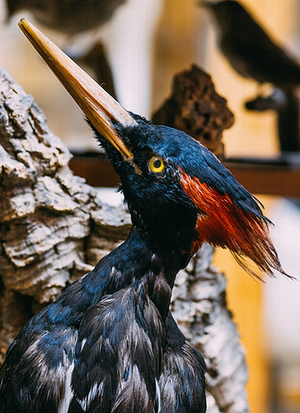
Once America’s largest woodpecker, the Ivory-billed woodpecker was listed in 1967 as endangered under the precursor to the ESA, the Endangered Species Preservation Act (ESPA).
The last commonly agreed upon sighting of the Ivory-billed woodpecker was in April 1944 on the Singer Tract in the Tensas River region of northeast Louisiana. The species was native to the bottomland hardwood forests and temperate coniferous forests of the southern United States and Cuba.
Despite decades of extensive survey efforts throughout the southeastern United States and Cuba, it has not been relocated. Primary threats leading to its extinction were loss of mature forest habitat and collection.
As early as 1953, the Bachman’s warbler was one of the rarest songbirds in North America. When first listed in 1967 as an endangered species under the ESPA, the bird had not been seen in the United States since 1962. Last documented in Cuba in 1981, there have been no verifiable sightings in that country since then.
The loss of mature forest habitat and widespread collection are the primary reasons for the extinction of both the Ivory-billed woodpecker and the Backman’s warbler.
Eight Freshwater Mussels Gone Forever
Reliant on healthy streams and rivers with clean, reliable water, freshwater mussels are some of the most imperiled species in the United States, where more than half of the world’s species of freshwater mussels live.
Mussels proposed for delisting due to extinction are all located in the Southeast, America’s biodiversity hot spot for freshwater mussels. They are the:
- – flat pigtoe (Mississippi),
- – southern acornshell (Alabama, Georgia, Tennessee),
- – stirrupshell (Alabama),
- – upland combshell, (Georgia, Alabama, Tennessee),
- – green-blossom pearly (Tennessee, Virginia),
- – turgid-blossom pearly mussel (Tennessee, Alabama, Arkansas),
- – yellow-blossom pearly mussel (Tennessee, Alabama)
- – tubercled-blossom pearly mussel (Alabama, Illinois, Indiana, Kentucky, Tennessee, West Virginia, and southern Ontario, Canada).
Two Freshwater Fishes Now Extinct
San Marcos gambusia – Listed in 1980, this freshwater fish was found in the slow-flowing section of the San Marcos River in Texas. The San Marcos gambusia has not been found in the wild since 1983. Primary reasons for its extinction include habitat alteration due to groundwater depletion, reduced spring flows, bottom plowing and reduced aquatic vegetation, as well as hybridization with other species of gambusia.
Scioto madtom – Listed as endangered in 1975, the Scioto madtom was a fish species found in a small section of the Big Darby Creek, a tributary of the Scioto River, in Ohio. The Scioto madtom was known to hide during the daylight hours under rocks or in vegetation and emerge after dark to forage along the bottom of the stream. Only 18 individuals of the madtom were ever collected with the last confirmed sighting in 1957. The exact cause of the Scioto madtom’s decline is unknown, but was likely due to modification of its habitat from siltation, industrial discharge into waterways and agricultural runoff.
The Fish & Wildlife Service seeks information, data, and comments from the public regarding this proposal to remove these 23 species from the ESA and declare them extinct.
The proposed rule will be available in the Federal Register Reading Room on September 29, 2021, click here for access. Then use the link found under the Fish and Wildlife Service Endangered and Threatened Wildlife and Plants section. This proposal will be published in the Federal Register on September 30, 2021.
The Fish and Wildlife Service will accept comments received or postmarked on or before November 29, 2021. Comments submitted electronically using the Federal eRulemaking Portal must be received by 11:59 p.m. Eastern Time on the closing date.
Featured image: The long curved beak of the Kauai akialoa is typical of Hawaiian honeycreepers, This species went extinct in the 20th century due to introduced avian disease and habitat loss in their wet high mountain forests. (Photo courtesy Birds of the World)


